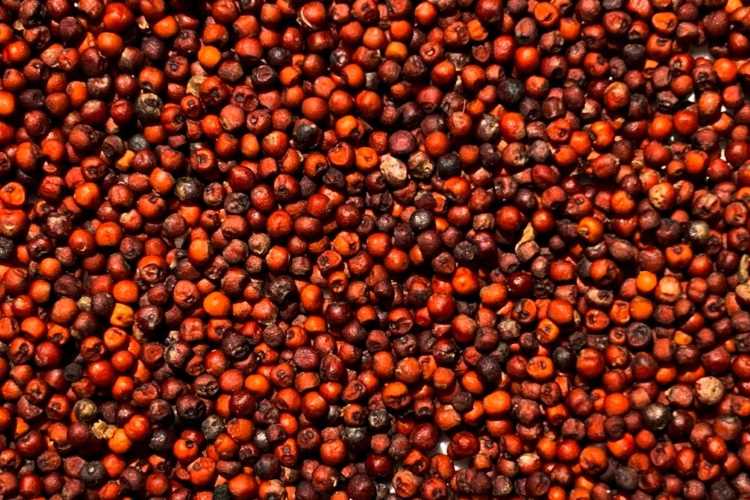
In Indian agriculture, millets stand out for withstanding the tests of time and adversity. These ancient grains, once the lifeblood of our ancestors, are reclaiming their position amid modern crops, offering solutions to today’s pressing challenges. From combating the climate change to addressing evolving health concerns, millets present an impressive case for their cultivation and consumption. India, the world’s largest millet producer, is gearing up to leverage the potential of these grains.
Millets are climate-resilient, nutritionally dense crops that outperform wheat and rice in marginal conditions. Indian millets are richer in proteins, minerals, fiber, and vitamins. Furthermore, they are gluten-free and possess a low glycemic index, which is beneficial for individuals with celiac disease, diabetes, or gluten intolerance. Unlike many other crops, millets don’t demand expensive fertilizers or pesticides.
Major millets cultivated in India include Sorghum, Bajra (Pearl millet), Ragi, and smaller varieties like Foxtail millet, Little millet, Kodo millet, Proso millet, and Barnyard millet. Pearl millet, notably, is second only to sorghum in terms of area and production, with Rajasthan being its primary producer. Millets, owing to their adaptability, can thrive in diverse soils and climates. They consume less water and require fewer chemicals, reinforcing their eco-friendliness and cost-efficiency.
READ I India to challenge EU’s carbon border tax at WTO
Millets and sustainable farming
Globally, 60 crore people in Asia and Africa rely on millets as a staple, with cultivation spanning 131 countries. India stands proud as the largest millet producer, contributing 80% to Asia’s yield and 20% globally. Over the last decade, millet production in India has soared from 40 million tonnes in 2012-13 to 50.9 million tonnes in 2021-22 (Economic Survey FY 2023). India’s export value for millets rose from $59.75 million in 2020-21 to $64.28 million in 2021-22.
Prominent importing countries include Nepal, UAE, and Saudi Arabia. Looking forward, the Agricultural and Processed Food Products Export Development Authority (APEDA) targets millet exports to reach $100 million by 2025. Recognizing its significance, the Indian government celebrated 2018 as the Year of Millets and led the motion at the United Nations General Assembly (UNGA) to declare 2023 as the International Year of Millets, a resolution supported by 72 countries.

Yet, challenges remain in establishing millets alongside traditional staples like wheat and rice. Deep-rooted dietary preferences, limited consumer awareness, misconceptions about taste, and a higher price point compared to other cereals have impeded millets’ integration into mainstream diets. On the cultivation front, while millets have a shorter growth cycle—often harvested within 60 days—they still lack the robust supply chains that their counterparts enjoy.
Enhancing the accessibility and affordability of millets requires bolstering their production and distribution networks. Additionally, as the World Meteorological Organisation forecasts escalating temperatures in the coming years, which could jeopardize major cereal productivity, the focus should intensify on millet research, mechanization, and value-added products.
The Indian millet market, currently valued at $9 billion, is predicted to surge to $25 billion by 2025. With the millet-based food sector alone projected to grow from its current $60 million to $1.2 billion by 2025 (Ians, 2022), the potential is undeniable. Government initiatives, subsidies, and awareness drives have been instrumental in millets’ resurgence. As climate conditions become more unpredictable, millets emerge as a sustainable solution, poised to become a staple in both Indian fields and kitchens.
In the face of an increasingly unpredictable climate and shifting dietary preferences, millets stand out as a beacon of sustainability and nutrition. Their resilience to adverse growing conditions, combined with remarkable nutritional benefits, positions them as a future-forward crop that addresses both ecological concerns and health imperatives.
As India continues to grapple with challenges like depleting water tables, over-reliance on chemical fertilizers, and the looming threat of climate change, the cultivation and consumption of millets could offer a sustainable path forward. Their adaptability, coupled with low resource demands, underlines their potential as a mainstay in India’s agricultural and dietary framework.
Yet, the road to mainstreaming millets demands concerted efforts from multiple stakeholders. While the government has made commendable strides in advocating for millets, it is equally crucial for farmers, consumers, and the private sector to recognize and harness their potential. As the world moves towards more sustainable and health-conscious choices, the growth trajectory of millets in India serves as a promising indicator of their impending significance.
Embracing millets not only signifies a return to our agrarian roots but also symbolizes a progressive step towards a healthier populace and a more resilient agricultural sector. The onus now lies in amplifying awareness, improving infrastructure, and fostering innovations to ensure that millets occupy a prominent place on our plates and in our fields.
Questions are being raised on agricultural practices that have strained our environment and health. Millets offer India a golden opportunity to fortify its food security, bolster ecological resilience, and pave the way for a nutrition revolution. Their increasing significance on the global stage, underscored by their recent recognition at the United Nations, is a testament to their growing relevance. As we march into a future marked by uncertainty and change, millets emerge as beacons of hope and sustainability. For India, it’s not just about reclaiming our agrarian legacy, but charting a sustainable, nutritious, and prosperous path forward.
(Dr Priya Shah is Assistant Professor of Economics at LJ University, Ahmedabad.)
Naliniprava Tripathy is an Indian economist based in Shillong. She teaches finance at IIM Shillong.

